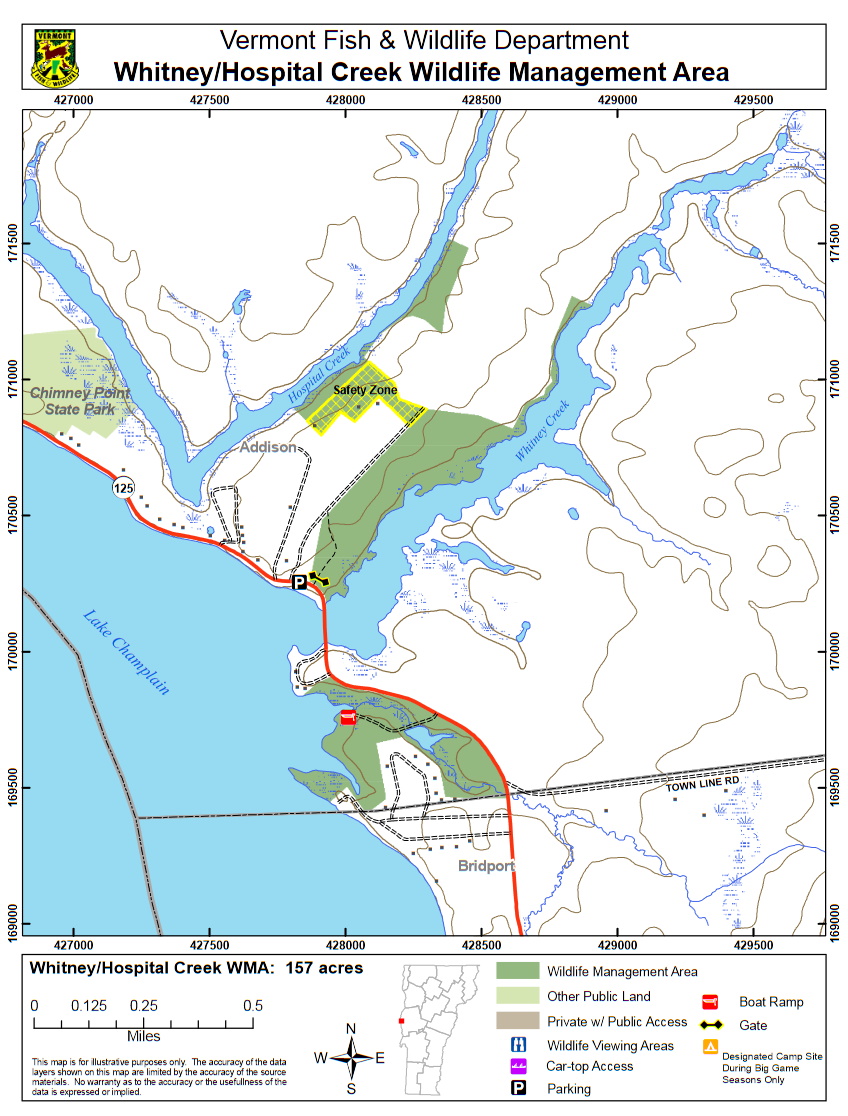Whitney Creek/Hospital Creek WMA
Whitney Creek/Hospital Creek WMA
Addison, Vermont 05491
Whitney Creek and Hospital Creek Wildlife Management Area guide and mapTips for Birding
Birdwatching in Vermont, p. 70.
Birds of Interest
The two creeks provide excellent cover for waterfowl reproduction. Breeding ducks include mallard, black and wood ducks, hooded and common mergansers, and blue-winged teal. Other water birds frequent the wetlands such as great blue herons, American bitterns, soras, American coots, and kingfishers. Tree swallows and eastern kingbirds may skim the water’s surface for insects. Various songbirds inhabit the nearby woods. One may hear or see Baltimore orioles, northern cardinals, pileated woodpeckers, and screech owls. Upland game birds are ruffed grouse, American woodcock, and wild turkey.
About Whitney Creek/Hospital Creek Wildlife Management Area
See all hotspots at Whitney Creek/Hospital Creek Wildlife Management Area
Whitney/Hospital Creek Wildlife Management Area (WMA) is located in west-central Vermont in the town of Addison, adjacent to Lake Champlain. The Area’s 157 acres are owned by the State of Vermont and managed by the Vermont Fish and Wildlife Department. The State owns conservation easements on an additional 439 acres. Access by foot is via a gated road on the north side of the causeway crossing Whitney Creek on VT-125 in Addison. There is a small parking area on the west side of VT-125, just north of the causeway. One can access the Hospital Creek portion from privately-owned campgrounds along VT-125, with permission.
This WMA also includes the McCuen Slang Fishing Access Area, which is located just south of the causeway on VT-125. It is a 53-acre parcel, with a dam, a small wetland, and a boat ramp.
Both Whitney and Hospital Creeks are short lowland streams that empty into Lake Champlain and have extensive lake-level wetlands. The WMA is a mix of emergent and scrub/shrub wetlands, old fields, an apple orchard, and forests. Farms and scattered woodlots surround it. The woods are composed mostly of white ash, red maple, shagbark hickory, red oak, and hophornbeam. Buttonbush scrub-shrub swamp creates dense thickets that provide excellent cover for wildlife. The marshes are rich in aquatic plants. Cattail and wild rice are the dominant graminoids. River bulrush, three-way sedge, and umbrella-sedges are present, as well as pickerelweed, flowering rush, yellow pond lilies, water-plantain, water-smartweed, water-dock, bulrushes, burr-reeds, and duckweed.
Features
Restrooms on site
Wheelchair accessible trail
Entrance fee
Content from Whitney Creek and Hospital Creek Wildlife Management Area guide and map
Last updated October 8, 2023
